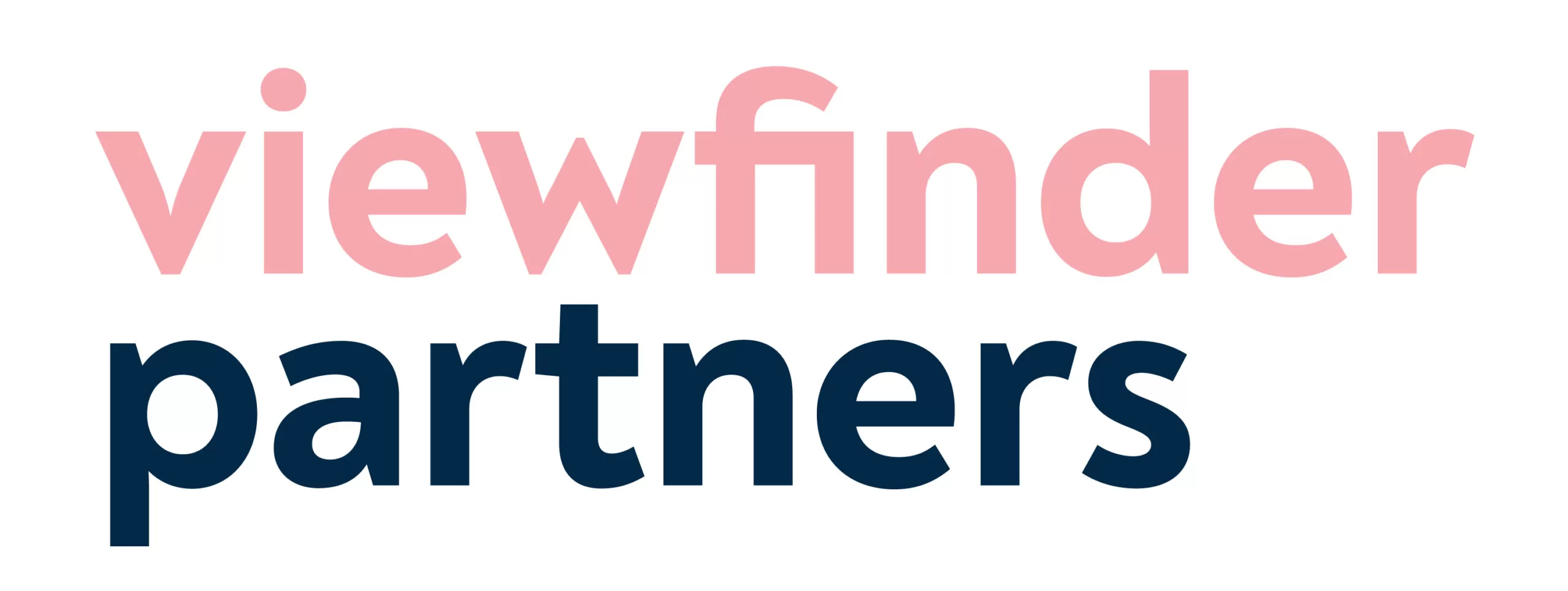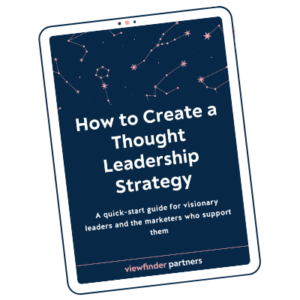I think a lot about “modern thought leadership.” What does it mean to be a modern thought leader? And how will thought leadership continue to evolve in our wild and chaotic current reality?
As we enter a season of reflection, I’ve been thinking about what I’ve learned this year through my work with thought leadership clients.
Everyone needs a strategy.
I started working as a thought leadership strategist because I saw a huge gap in the B2B marketing landscape.
No clear end goal. Companies would launch a big idea, but they didn’t really know their end goal. Without a clear vision for their thought leadership, the practice quickly falls by the wayside. It’s not a focus or a priority.
Personal ego without a purpose. Or a company founder wanted to be known as a “thought leader.” But why? To what end? How would that personal thought leadership platform boost the company’s goals?
No defined perspective. This is the scenario that makes me most itchy: Companies decide to lay claim to a very broad, borderless concept, like “the future of work” or “women in leadership.” They own the noun, but there is no verb. What do you think the future of work will look like? How should the trajectory change? What do we need to know that isn’t clear already?
As “thought leadership” as a marketing and branding strategy has become more popular, this strategy gap has become more pervasive.
Thought leadership strategy has to start at the top.
I’ve learned this lesson the hard way. If your company’s thought leader is an executive, they have to own the thought leadership strategy or at least be excited about it. The strategy CAN NOT start and end with marketing.
Let’s say your company has decided that your theme for 2022 is going to be Bold Disruption. And you want your CEO, Pam, to really own and carry that message.
Ask yourself:
Is Pam interested in bold disruption? Does she have personal stories and perspectives about disrupting an industry or acting boldly?
Does Pam represent those values? Does she appreciate and reward boldness?
Is Pam interested in being the voice of the company?
Is Pam interested in being the voice about this specific topic?
Is it possible for Pam to create room in her calendar to be that voice? Does she have time and energy to be interviewed, appear on podcasts, speak on this topic, and lead the internal and external conversations? Does she have time to at least review ideas or content?
I’ve seen over and over again that if you answer most of these questions with a big fat NO, or a laugh or eye roll, you’re on the wrong track. When marketers push senior leaders to step into the role of thought leader, the results are never positive for anyone. The thought leader feels uncomfortable and forced (like a puppet who is supposed to parrot a message they don’t connect with), the marketer doesn’t get the energy and enthusiasm they’re looking for, and at the end of the day, no one buys the message. It’s not authentic.
But when thought leadership starts from the top — when the voice of the company actually has the idea in the first place — all of these barriers disappear. Let’s say Pam has a personal history of bold disruption. It’s why she founded the company or joined the firm in the first place. She personally reads a lot about disruption, has conversations with colleagues about it, is endlessly curious about other people’s experiences making bold decisions, and always wants to push the envelope.
In that scenario, all constraints around finding time or money to deliver the core message disappear. Pam is energized, makes time on her calendar, and is interested in the results. And as a result, everyone who works with her to get that message out feels more invested, empowered, and energized about the work.
Do you see the difference? When I hear marketers say, “We can’t get our CEO on board” or “He always cancels interviews at the last minute,” I see a major problem. The ideas, energy, and motivation have to be centered in the thought leader. If they’re not, they will never prioritize spreading those ideas.
One good idea has endless mileage.
I’ve seen the power of one really good core idea to transform an entire company from the inside out. When done well, thought leadership is business strategy. It guides everything else.
That’s one of the reasons that I’m “format agnostic.” I produce podcasts and ghostwrite books and articles. But I’m much more interested in the ideas behind all of those content formats. I know the power of storytelling and a well-crafted idea, and it frankly doesn’t matter which wrapper you use to package it.
I know this because I’ve seen firms lean into one core idea, and run with that idea in different iterations for YEARS. One unique idea might start as a TED Talk, turn into a podcast, a newsletter, a Medium series, then a video, an advice column, and even a book.
And that brings me back to the original lesson that started me on this path. I saw so many people in B2B marketing focused on the channel, the platform, the format, the technical details. Where would they publish? How often should they post on LinkedIn? How many minutes should video be? And those questions aren’t just boring to me. They’re borderline offensive. Because they’re completely missing the point. The answers to those questions will be different next year than they were this year, as our technology and media platforms evolve faster than anyone can keep up. Nothing is more important than the power of your idea.
These are 3 things I’ve learned to be true through my work lately. What about you? What are you reflecting on as we wrap up 2021? How will you approach your work differently next year?







